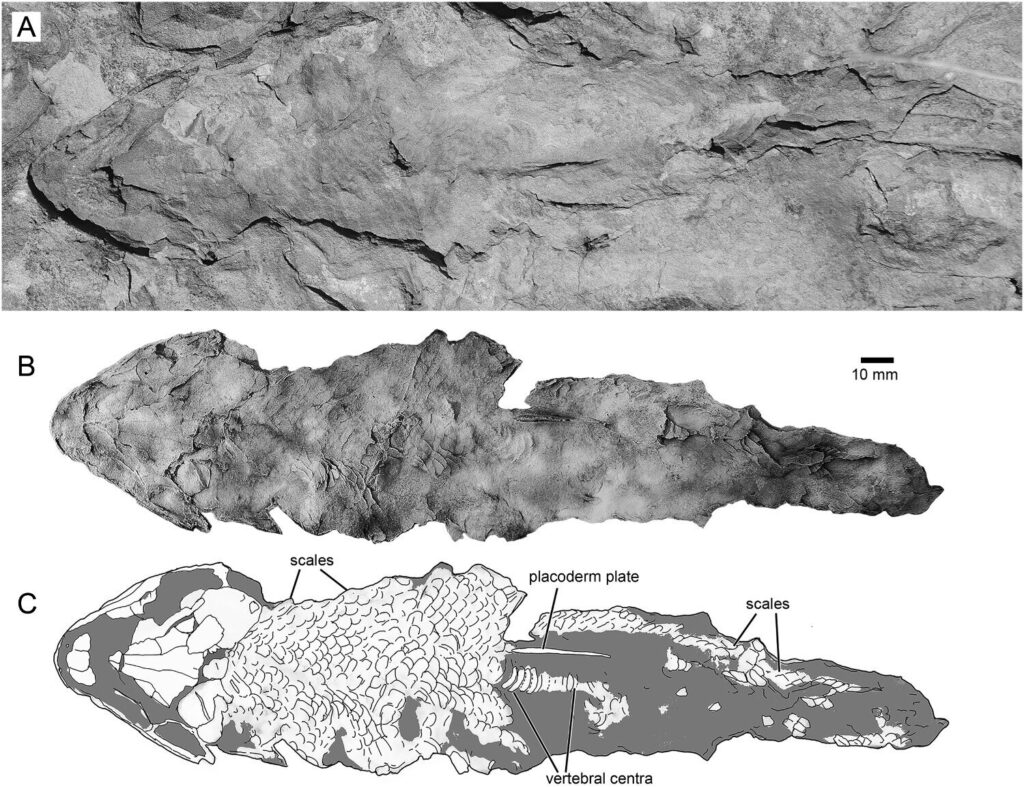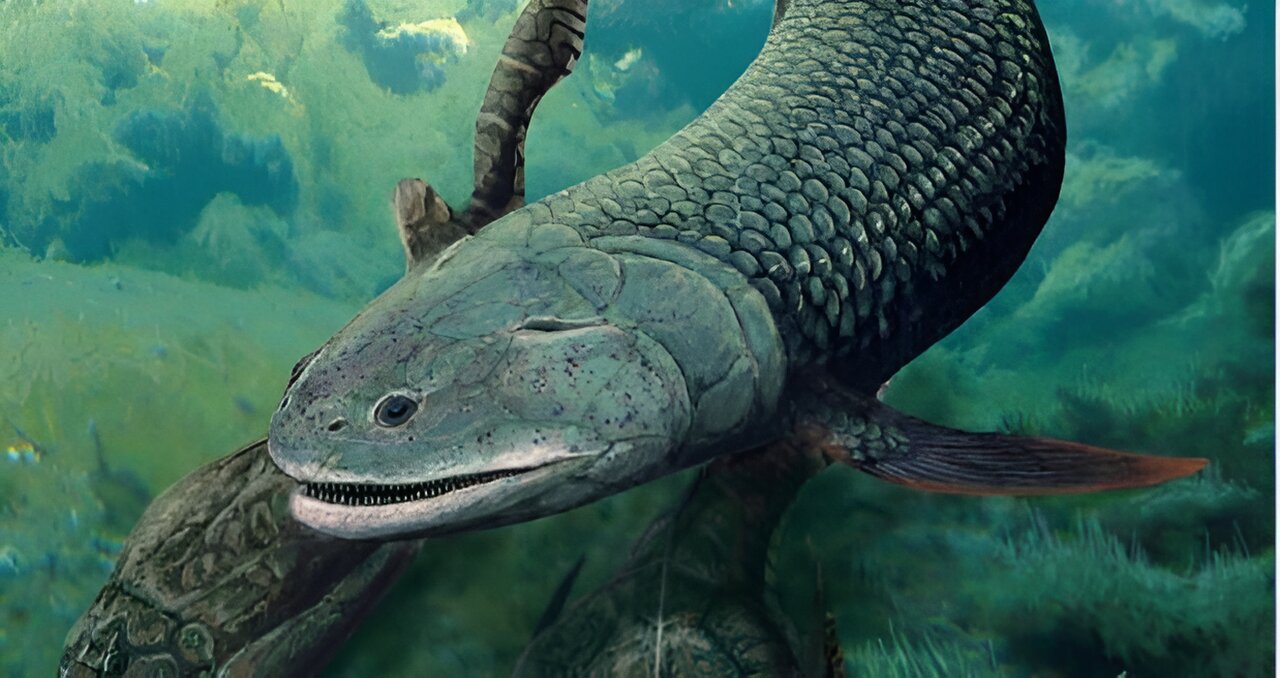In the heart of Australia’s rugged landscape lies a relic of prehistoric marvel—a testament to the ancient rivers that once flowed across the continent. The Finke River, also known as Larapinta, silently witnesses eons of geological history, its waters once teeming with a diversity of life that now exists only in the annals of fossilized remains.
Recent discoveries along the banks of the Finke River have unveiled a creature from the depths of time—a sleek and predatory lobe-finned fish adorned with large fangs and bony scales. Named Harajicadectes zhumini by an international team of researchers led by Flinders University paleontologist Dr. Brian Choo, this fossilized marvel offers a glimpse into a bygone era when strange and wondrous creatures roamed the ancient waterways.
The nomenclature of Harajicadectes zhumini pays homage to its origins—the Harajica Sandstone Member in Australia’s “Red Center,” where the fossils were unearthed. The name also draws from the ancient Greek dēktēs, meaning “biter,” a fitting epithet for a creature equipped with formidable fangs. Additionally, the species name honors Professor Min Zhu of the Chinese Academy of Sciences, Beijing, a pioneer in the study of early vertebrates whose contributions have shaped our understanding of ancient life forms.
Belonging to the Tetrapodomorph lineage, Harajicadectes occupies a pivotal position in the evolutionary trajectory that eventually led to limbed tetrapods and, ultimately, to humans. What sets this ancient fish apart are its distinctive large openings on the top of its skull, known as spiracular structures. These structures, akin to those found in modern-day African bichir fish, are believed to have facilitated surface air-breathing—an adaptation crucial for survival in oxygen-deprived waters.
Dr. Brian Choo, whose expertise in paleontology is instrumental in unraveling the mysteries of prehistoric life, remarks on the significance of these spiracular structures: “This feature appears in multiple Tetrapodomorph lineages during the Middle-Late Devonian, suggesting a convergent evolution toward aerial respiration.”

The synchronized appearance of air-breathing adaptations among various tetrapodomorph lineages hints at a time of environmental change, marked by decreased atmospheric oxygen levels during the mid-Devonian period. Professor John Long, a renowned expert in fossil fish and a co-author of the discovery, elaborates on the adaptive advantage conferred by aerial respiration: “The ability to supplement gill respiration with aerial oxygen likely afforded these ancient fish a competitive edge in challenging aquatic environments.”
The journey to uncover Harajicadectes has been a labor of passion and perseverance, spanning over five decades of exploration and research. Fragmentary specimens discovered in 1973 by ANU Professor Gavin Young provided the initial clues, while subsequent expeditions in 1991 yielded a trove of fossils studied by institutions like the Melbourne Museum and Geosciences Australia.
However, it was not until Flinders University’s 2016 expedition that an almost complete specimen of Harajicadectes was unearthed, culminating in a groundbreaking revelation. “This fossil demonstrated that all the isolated bits and pieces collected over the years belonged to a single new type of ancient fish,” remarks Dr. Choo, highlighting the significance of the 2016 discovery.
The 2016 specimen, now housed at the Museum and Art Galleries of the Northern Territory in Darwin, serves as a tangible link to a distant past—a past where the Finke River flowed freely, harboring a wealth of life forms that continue to captivate and inspire scientists and enthusiasts alike. As we delve deeper into the ancient realms preserved in fossils like Harajicadectes zhumini, we unravel the rich tapestry of Earth’s history, offering glimpses into the marvels that once thrived in the primordial waters of Australia’s ancient rivers.
The research was published in the Journal of Vertebrate Paleontology.
Source: Flinders University
